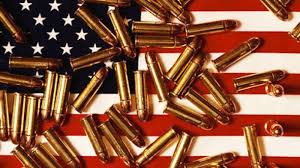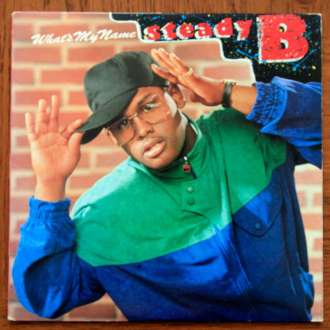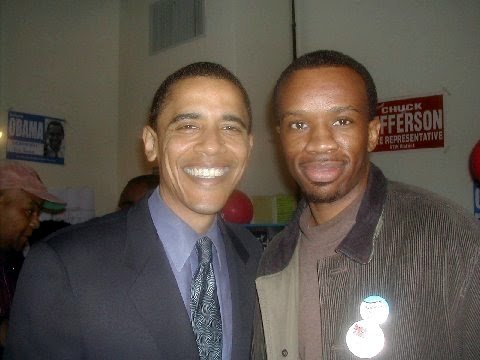This collaboration between the United Kingdom’s Michael Linney and myself addresses unemployment in the United States with a blend of poetry and jazz music. The arts meet reality.
Monthly Archives: December 2014
The Life of a Bullet Entering Black and Brown Flesh – A Poem by Christopher D. Sims
That bullet, that dreadful, heartless bullet
started off in a racist southerner’s rifle
pointed at a runaway slave, who was
on the run. Entering his chest cavity, it
had nothing to stop it. That bullet was
dipped in hatred and steeped in envy:
a bullet whose soul was empty, empty.
That bullet, that dreadful, heartless bullet
found its way up north inside the gun of
a police officer patrolling the south side of
Chicago. Still filled with hatred, not a moment
was wasted, before it found itself tearing through
the flesh of a young black male. Sending him
to “hell”, as the cop suggested. He wasn’t
even arrested. The community was restless –
wondering where the bullet would end up next.
That bullet, that dreadful, heartless bullet,
wound up in Oakland, California years later
chasing after brown flesh. Angrily traveling
through barrios searching for more flesh to
puncture. Inside the 45 of a bigot inflamed
by “illegal immigration”, that bullet cut down
a young brown girl, cutting down a nation.
Bullets have no feelings, care about no one’s
name or humanity.
Bullets take orders, are sent to create pain.
The pain that is with us now as we remember
countless faces who are the victims of the
heartlessness behind those bullets that are
finding their way into innocent flesh.
Where will the bullet end up next?
Where will the bullet end up next?
© Christopher D. Sims
2014
A Music Review 27 Years In The Making: Steady B’s “What’s My Name”
I started listening to rap/hip-hop music in the early 80s, shortly after my older brothers introduced my twin and I to the New York birthed art form. Those early 80s were great times for young black and brown women and men who witnessed the early stages of a culture that has grown exponentially since then. Rap was mesmerizing, and that’s exactly what it was for me before I was even a teenager.
Steady B’s classic “What’s My Name” was one of the first rap recordings that turned me into a big fan and addict of rhythms and sounds that have their roots in the musicality of the African diaspora. I had the album, a 78 inch vinyl, that I played on a daily basis for months. Steady B is one of those lyrical legends that you hear about on the underground and early rap scene. He established himself early on with this second project.
Steady B is a Philadelphia native who is a pioneer of the early rap sound that Philadelphia is known for.
My favorite track on the album is the title track, “What’s My Name.” He rhymes “Steady B yeah you got it right/The MC, master of the ceremony tonight.” With passion and a beat that will quickly make your head nod, the track takes you to a place where purists of rap have sought quality lyricism and beats that give an emcee’s rhyme the power that they need. “What’s My Name” reminds me of Nas’ classic “It Ain’t Hard To Tell” – lyrical prowess that you can only get from those who have proven themselves, and show a natural talent at rhyming and emceeing.
Steady B wrote and recorded “I’ll Take Your Radio.” An early diss track that was aimed at LL Cool J. This track helped put him on the map and solidify him as an emcee to be reckoned with.
“What’s My Name is the quintessential rap album that “rap heads” love, and once they re-examine it, they give it its just props. Every beat on the album is done well and the scratching by DJ Tat Money is exactly what you’re looking for in an early rap album. Jazzy Jeff and The Fresh Prince’s early sound come out of this Philadelphia tradition of precise rap lyrics and cutting and scratching that is superb.
“Use Me” is my second favorite track on the album. It’s a smooth rap track that has a sample in it from an early R&B song. It’s probably one of the earliest rap tracks that featured a sample from
an R&B song. DJ Tat Money’s best scratching is found in this song. I can listen to this track over and over.
“Funky Drummer” is another pounding track with Steady B flowing over live drums. This was a great idea. Live drums and a rapper go together well if it’s done right. Steady B had no problem making it work!
When I want to go to a quality rap album that takes me back to the music I fell in love with as a child, “What’s My Name” is an album that I can go to and be satisfied. I recommend this album to any youth who wants to find the best in early rap music. For upcoming lyricists and rappers, Steady B can be a guiding force showing you how it’s supposed to be done. I would say the same for DJ Tat Money. He’s a deejay who is masterful and talented at what he does. “What’s My Name” will show you that.
Long live Rap and the culture we call Hip-Hop
President Obama And His Decision on Cuba
This is a historic and much needed decision made by President Barack Obama. A decision that comes at the right time in an increasingly multicultural world.
As he said, this embargo has been place since 1961. That's a long time, and a lot has changed since then.
Cubans are human beings too, what does it take for a lot of people here in the United States to understand or respect that?
We can love their famous cigars, but not recognize that they are human beings who practice politics differently?
Cuba will benefit greatly from our future dealings with them. Especially their economy. They deserve a way out of poverty just like we do here in the United States.
I am proud of President Barack Obama, and I am happy for Cuba.

Social Justice and Creativity: My New Studio Project
I am returning to the music scene with a new album entitled “serious FUN.” There’s a time to be serious and there’s a time to have fun is the album’s concept and meaning. This new project finds me digging back into my roots as a lyrical rapper and leaning on my talent as a spoken word poet. I have teamed up with Independent Ear, Inc. to make this new album a reality.
The new project focuses on social justice issues, such as the water rights fight that took place in Detroit, MI this year. I also focus on the situation of black men in the United States with poetry that is gripping and moving. As a creative person, and someone who focuses on human rights issues, it was a must that I used the platform to talk about the reality of black life here in the United States on my new album.
I wanted this new project to have that feel. I wanted it to have a balance with seriousness and having some fun at the same time. I hope that I have accomplished that with this new project!
I enjoyed getting back to creative wordplay – challenging myself with a fast rapping style that some will be surprised by when they hear the album.
The album contains a lot of great production, such as the lead single we just released with Chicago producer 6th Trumpet. I chose us to start off with his VERY funky mix of what I call “Poetry’s Revolution.” I could not have picked a better producer to work with on such a track that contains a social justice message for many of the issues we are facing here, and beyond. You can listen to the track, and buy it here:
https://itunes.apple.com/us/album/poetrys-revolution-6th-trumpet/id944478036?i=944478101.
The balance of the project works well highlighting what I have done and accomplished over the years as an emcee, poet, and spoken word performer. I believe it will give my listeners and fans something to hold on to for a while until I devise the next project with Independent Ear, Inc.
With this project I will be seeking to continue to educate through my spoken word and show people that I am not limited as an artist, and that we should use all of the gifts and talents we’ve been blessed with.
Have some serious fun with my album which will be released on January 20th, 2015!
Follow this link to keep up with the release of “serious FUN”: http://www.independentear.com/artists/christopher-d-sims/
Thank you for your support!
Peace, love, and blessings in 2015 and beyond.

A Reflection: Participating in New York City’s “Day of Anger” March for Millions
This was the third march that I attended this year in regards to the injustices that have been done unto Black women and men in the United States. As I marched for blocks and blocks in the most racially diverse city on the planet, it made me proud to continue to be a part of a movement that feels old and new.
I say old and new because we have been marching for years in this country. The 1960s were pivotal times that influence and guide what is going on today here in the United States. We are marching in St. Louis, New York City, Rockford, Illinois, Chicago, Illinois, Portland, Oregon, and all across the land with a connection to earlier movements that were ripe with injustice and racial tension.
Thousands and thousands of people are fighting against a system that has not ended like we want it to, like we need it to. Even in the cold in New York City I felt just as connected to this modern-day civil rights movement as I did at the “a Weekend of Resistance” march that took place in St. Louis in October. The urge is there. We shout “shut it down” and “hands up don’t shoot”with urgency that is not going anywhere any time soon. I have a feeling that just like the marches in the 1960s, these current marches will help bring about a change that is desperately needed. Institutional racism should have been on its way out years and years ago.
We will need laws to change in order for a drastic change to take place, however. Laws will have to change that honestly protect black and brown people in a way that will be effective for years to come. We will need to start on the grassroots level focusing on local laws that have given the police the power to do what they have done to countless innocent people. Those laws being changed can come through the energy and urgency of these marches and protests we are participating in. If you know of any laws that are being written or worked on to help protect innocent people from dying at the hands of law enforcement, please let me know.
We are connected and marching, making new friends, and making improvements in the way activists, organizers, and planners have done things over the years to help make these marches and protests happen.
Social media a great tool just the same. I find myself being not only a person that is showing up at marches, protects and vigils, but also being an “arm-chair activist.”
New York City’s “Day of Anger” march definitely contained justifiable anger as we loudly protested against law enforcement. It felt strange as we marched those long New York City blocks saying things like “Hey hey, Ho ho! Those racist police have got to go!” They were on every corner watching us watching them. They looked comfortable in their positions and unmoved by rhetoric aimed directly at them. That’s the way things will be as we make it known all across the United States that we’re tired of what’s going on, and they are some of the biggest reasons why.
I heard drums and I saw children marching with their parents. Just like in Ferguson I saw the youth being the loudest and most determined in the NYC “Day of Anger” march. I felt moved and I participated in call and response, just like I did in St. Louis. I hope we continue to organize these marches and protests and be heard in the United States and across the globe.
A friend of mine who lives in London told me the world is watching. With those eyes on us, we can lead the change in regards to mass incarceration and the senseless deaths of black and brown people. The world needs to see us do so.
We have much work to do and some catching up to do when it comes to equality and justice. Let us be angry enough to continue to march, protest, and plan for more actions that will create the kind of country where we will no longer mourn for young people of color who died at the hands of the police.
White Allies in A Black Struggle
We are at a time in the United States when racial tensions are high all across the land, creating a pushback unseen since the 1960s. Another black struggle that is reshaping the fabric of our beloved country.
This curret black struggle – full of way too many tales of racial profiling and police brutality – has enpowered and pushed white folk to join in large numbers to help with the pushback.
Who could be better allies for black people in this unyielding institutional system?!
Just like abolitionists of the 1800s, we need white people today to be on the same frontlines we are on to crush the system. Just like those white folk who marched with Martin Luther King, Jr. and others, we need white people marching with us in Ferguson, Wahington, DC, New York City, and everywhere else.
I am a Unitarian Universalist and I am proud to say that many white Unitarian Universalists are showing up on the frontlines, organizing marches, as well as vigils. These white allies are in Missouri being seen and heard where Michael Brown lost his precious life.
Our white allies are being trained, and they are waiting for black leadership to guide them as we do this work together.
I have shared the pulpit twice this year with white UU ministers who are strong allies in this work. They know the power of being heard and the urgency that exist in the streets where the marches, protests, and vigils are taking place.
More like them will step up, and encourage others to do so.
If you’re a white ally continue to be heard and invite others to do the same. We need you.


